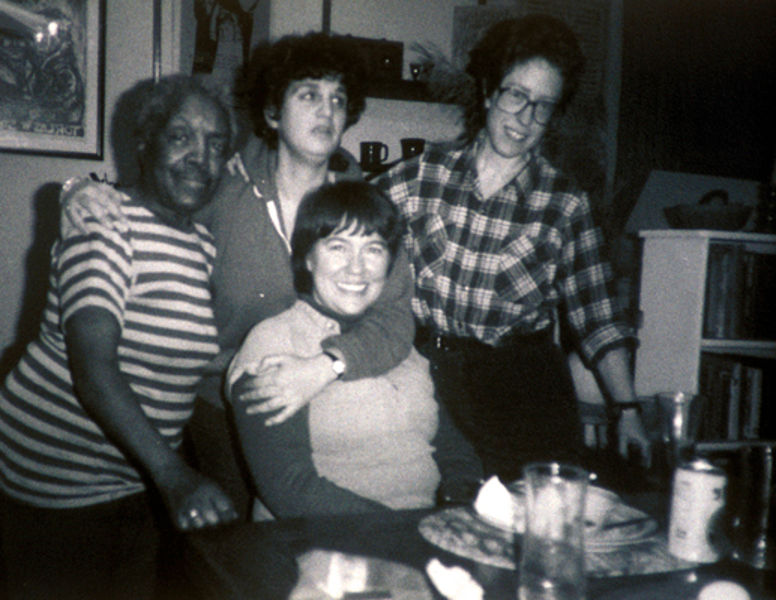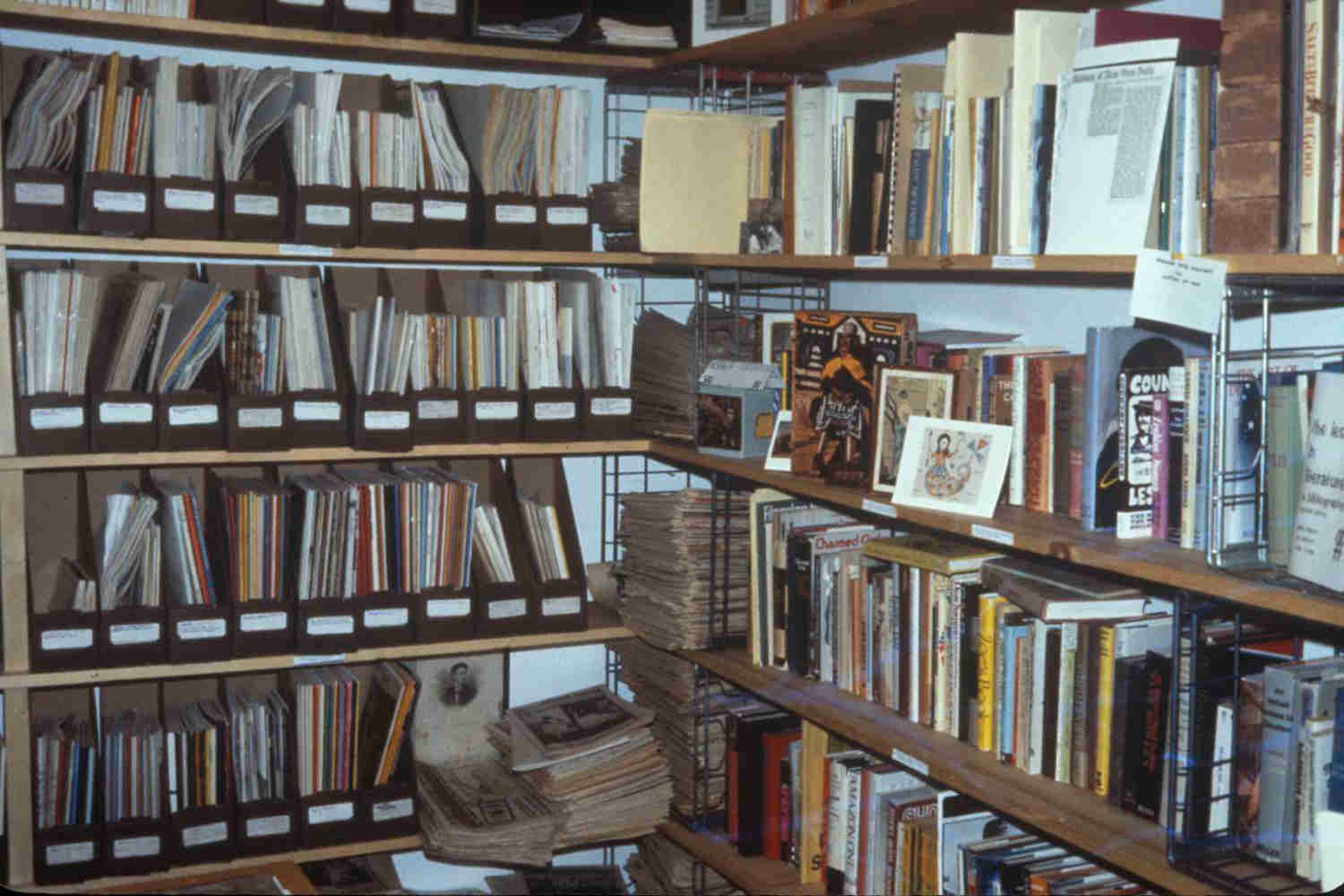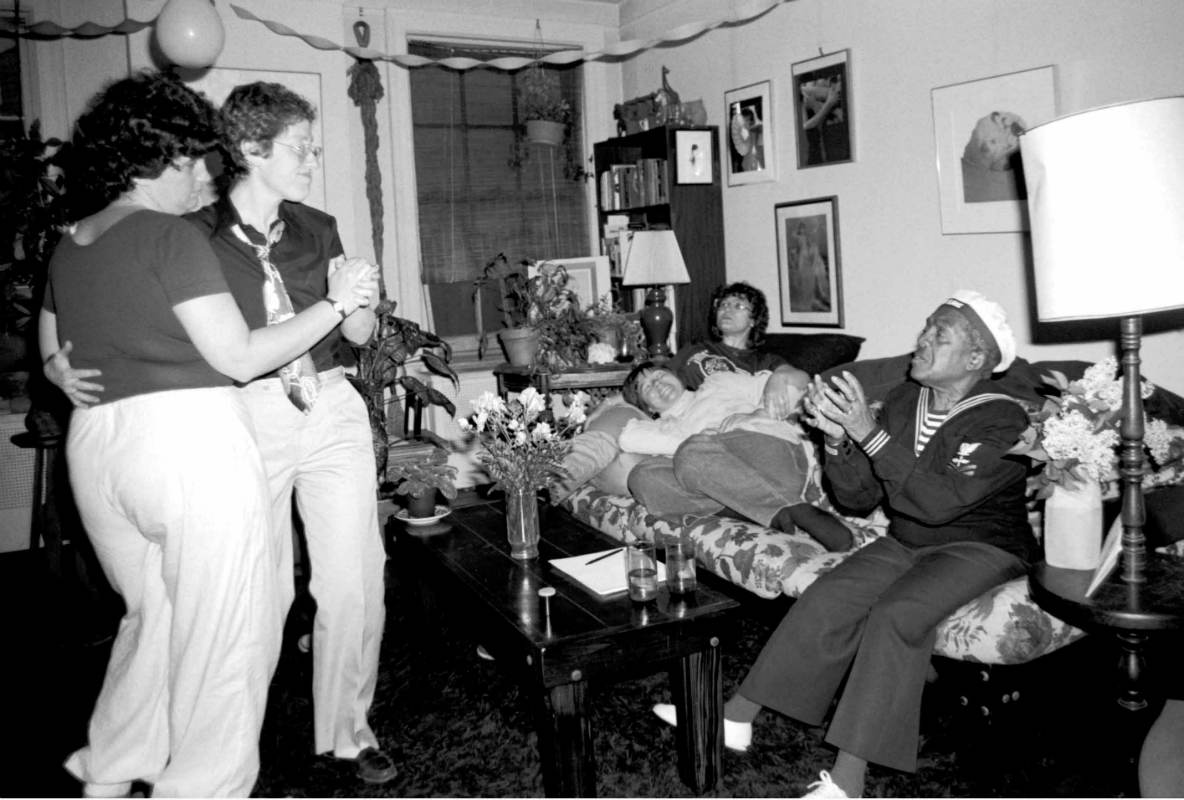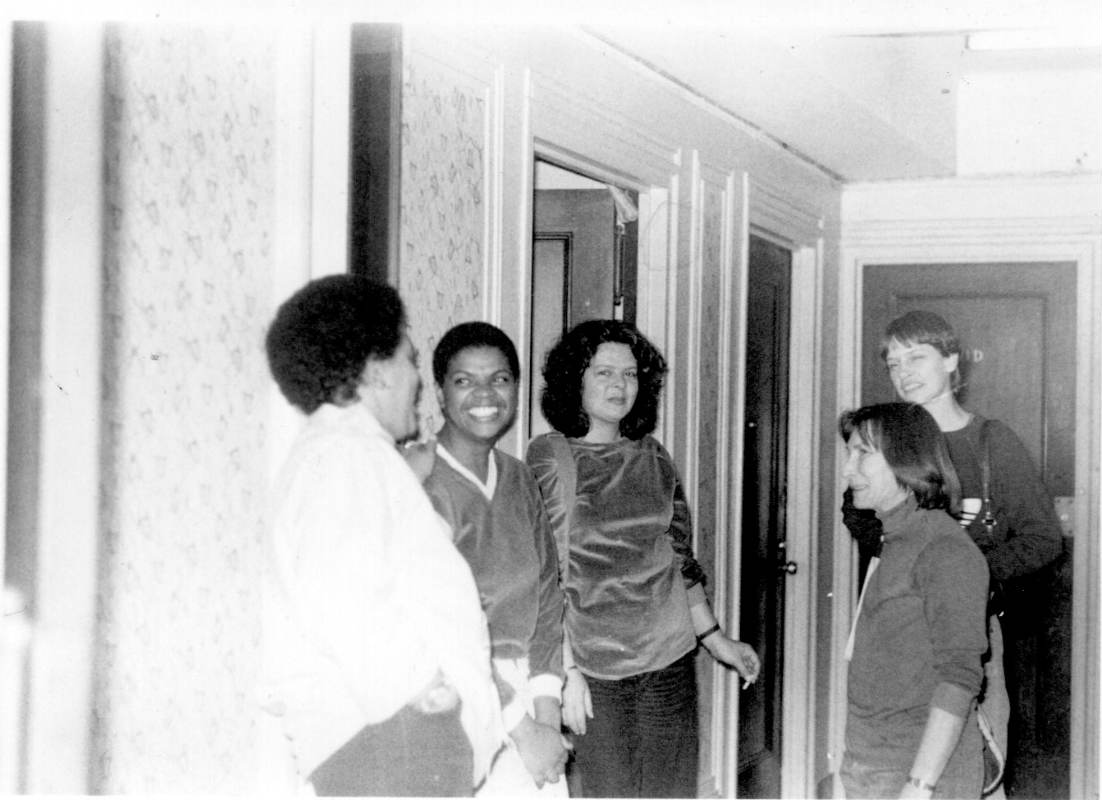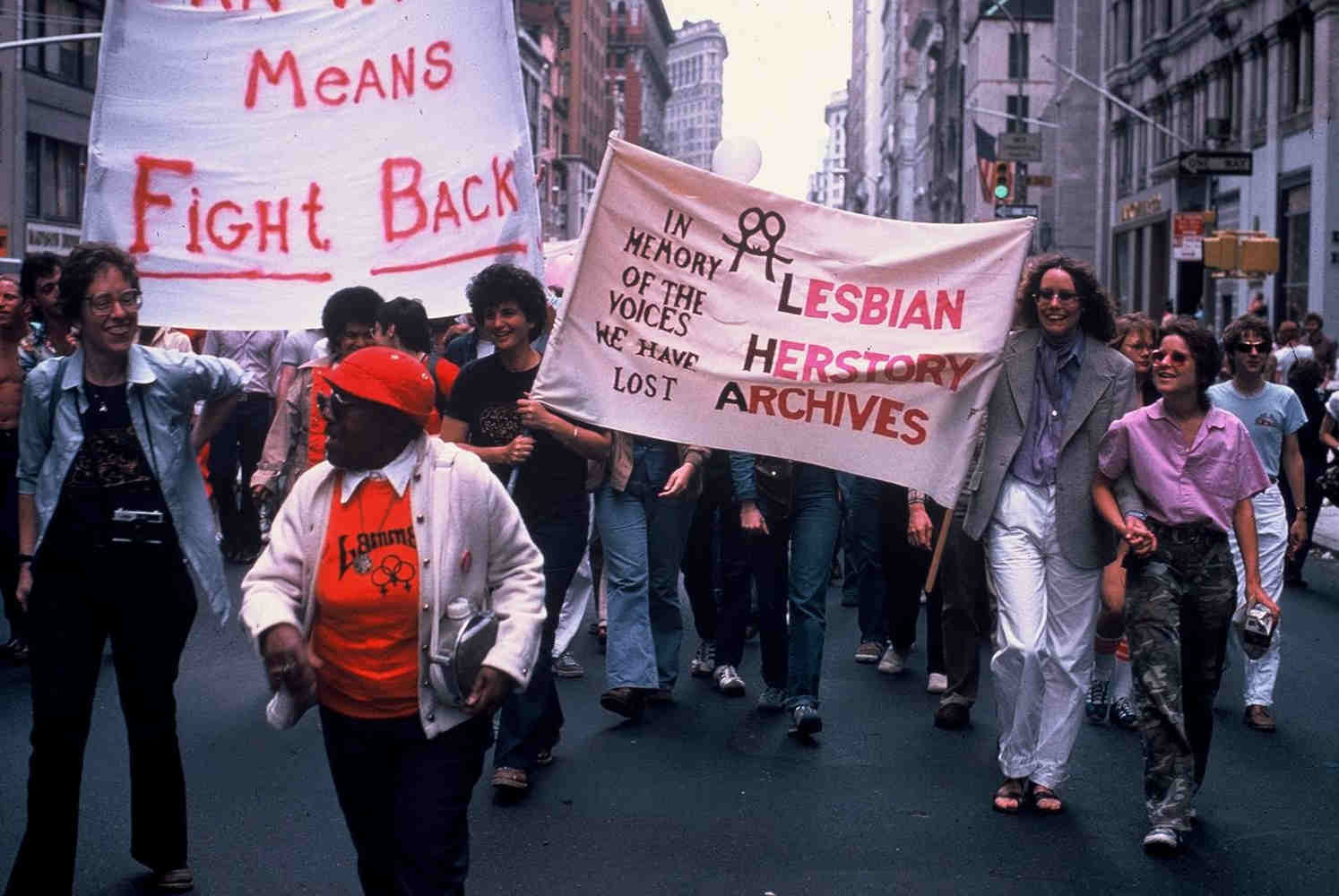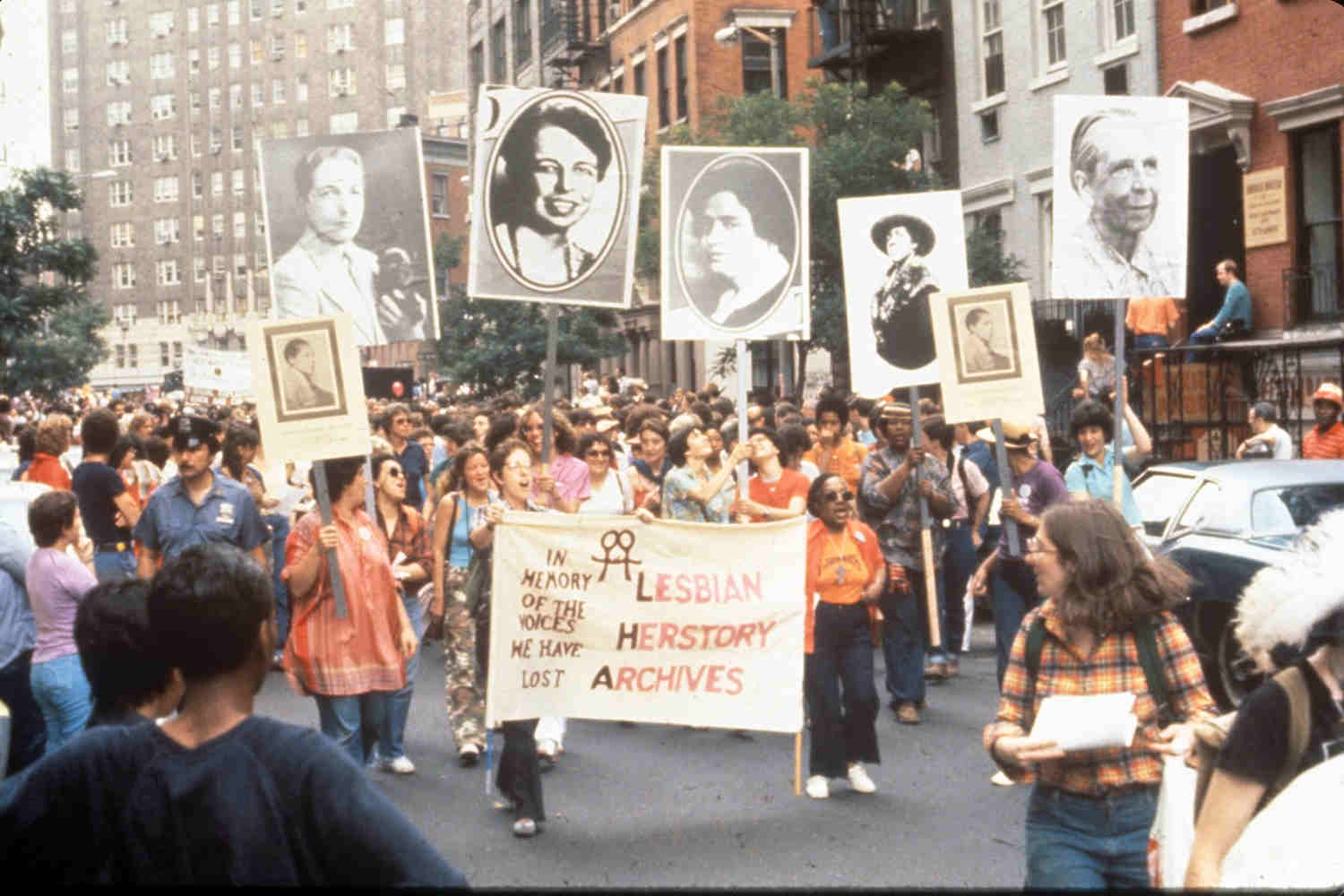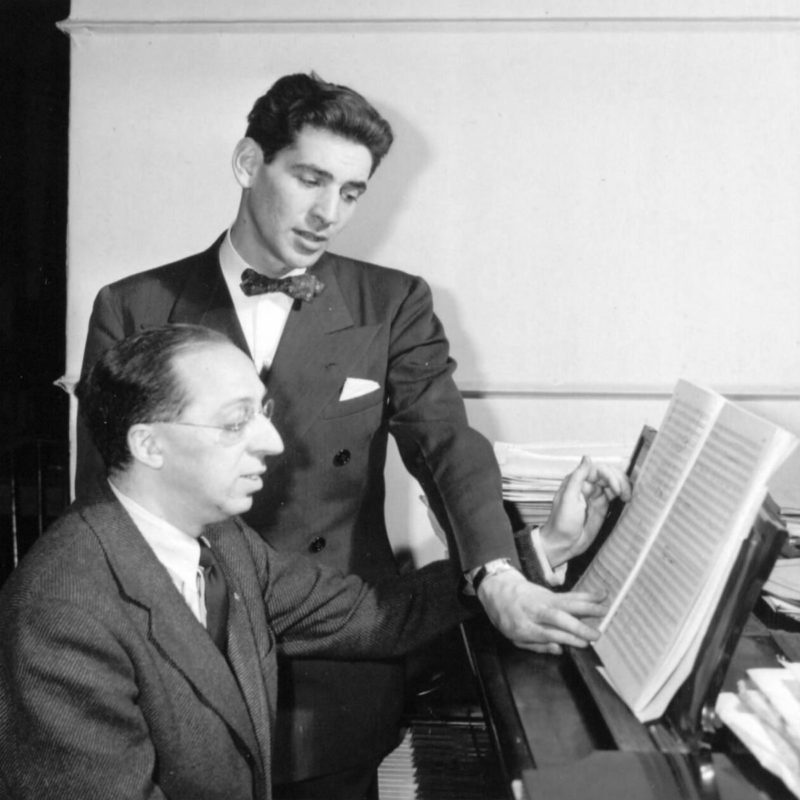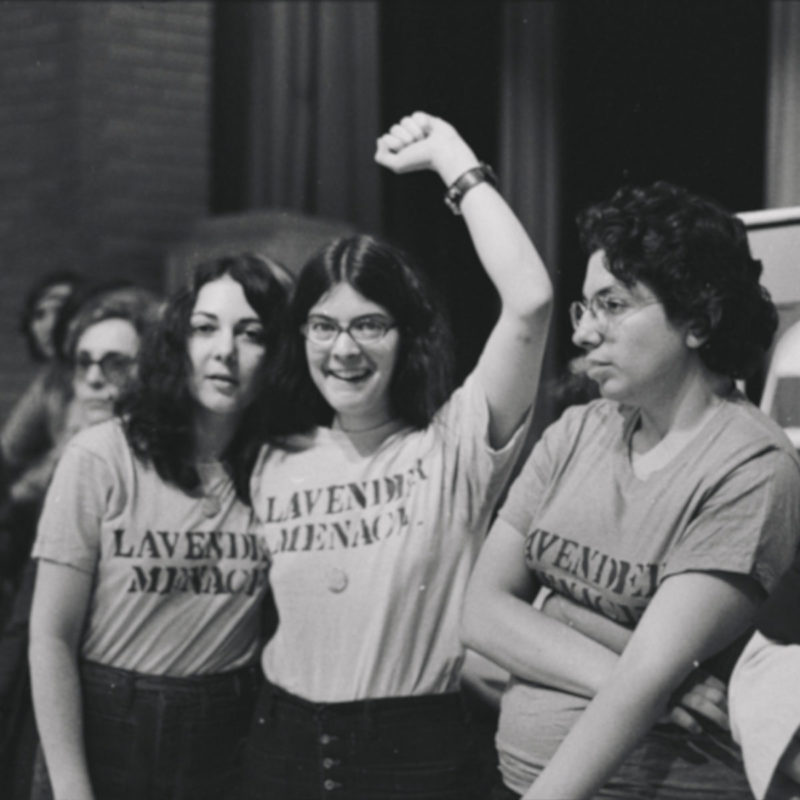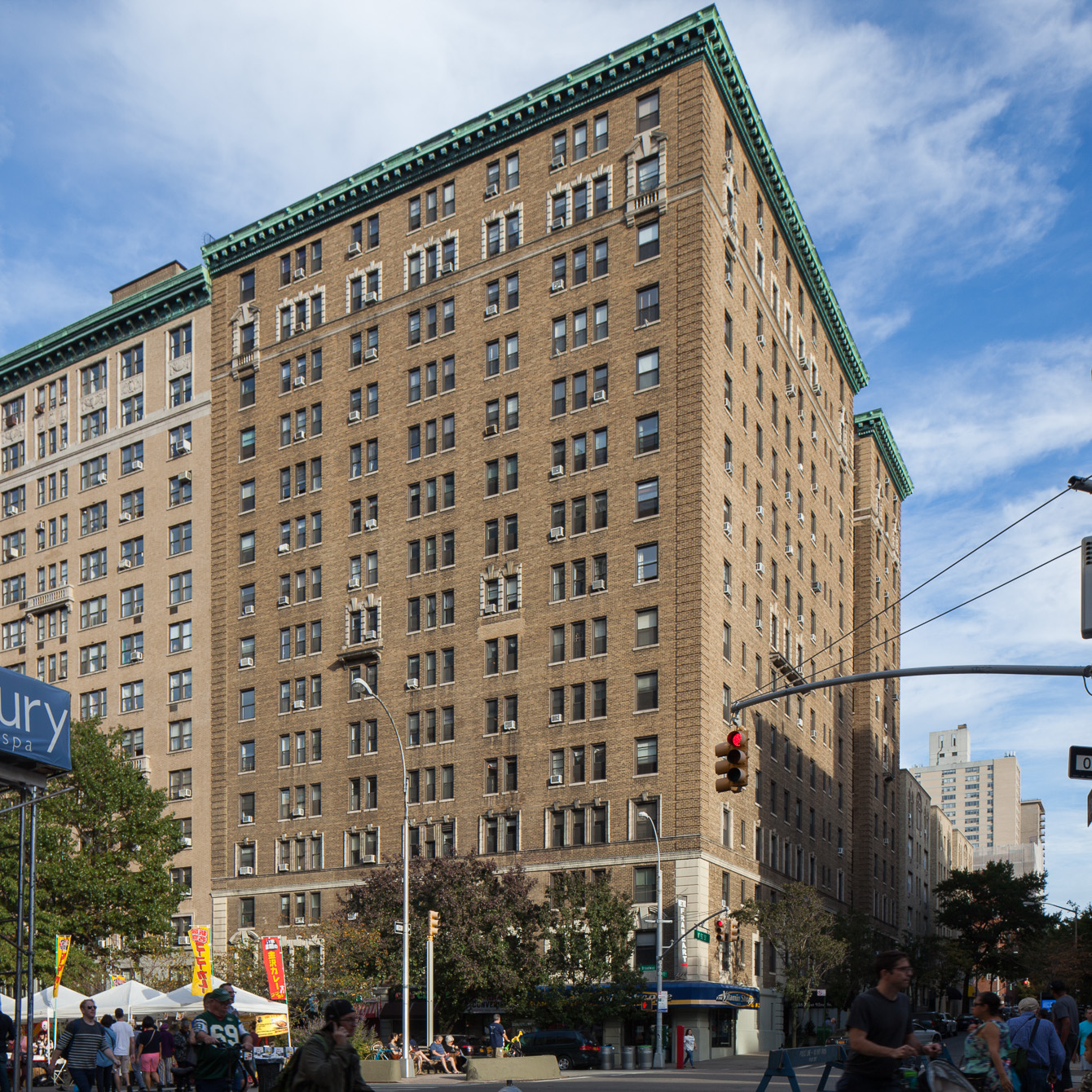
Joan Nestle Residence
also known as the original home of the Lesbian Herstory Archives (1974-1992)
overview
From 1974 to 2002, apartment 13A in this Upper West Side building was the residence of Joan Nestle, an influential lesbian activist and co-founder of the Lesbian Herstory Archives.
A vibrant communal space dedicated to preserving lesbian memory and ephemera, the Archives was located here from 1974 to 1992, when it moved to its current home in Park Slope, Brooklyn.
History
Joan Nestle (b. 1940), a Jewish lesbian feminist activist, writer, and archivist, grew up in the Bronx and began frequenting working-class, butch-femme bars, such as the Sea Colony, in late 1950s Greenwich Village. A writing teacher in the SEEK Program at Queens College from 1966 to 1995, Nestle helped form the Gay Academic Union (GAU) in 1973. A year later, she moved to 215 West 92nd Street, apartment 13A, on the Upper West Side, where she and other women from GAU founded the Lesbian Herstory Archives. It is one of the earliest (if not the earliest) and most important archives dedicated to lesbian history.
The creation of the Archives came from a long-standing hunger to learn more about lesbian history and culture and, according to its first newsletter, in June 1975, collect and disseminate “to our sisters all the prints of our existence.” The communal space also provided a voice for lesbians who often felt underrepresented and unheard in gay male-dominated groups. For eighteen years, “the ladies of 13A” gathered around the large square wood table in the dining room, which had on its wall a wood-cut print of photographer Alice Austen and her partner Gertrude Tate that was signed and donated by poet Adrienne Rich and her partner, author Michelle Cliff. There, they held discussions, launched books, and planned protests, among other activities. Butch lesbians would also use the bedroom to change out of their “work appropriate” blouses, dresses, and skirts.
The Archives room is a healing place; it is filled with voices announcing our autonomy and self possession. … I have lived through the time of willful deprivation and now it is our time to discover and to cherish and to preserve.
For fifteen years, the popular “At Home with the Archives” gatherings took place in the living room. Well-known lesbian artists, such as writers Audre Lorde and Dorothy Allison and photographers Tee Corinne and Joan E. Biren (JEB) shared their work here, though the Archives, perhaps most importantly, also nurtured aspiring filmmakers, writers, and others. Nestle’s long-time friend, activist Mabel Hampton, lived here toward the end of her life.
In addition to her involvement at the Archives, which moved to its current location in Park Slope, Brooklyn in 1992, Nestle was involved in many activist campaigns for LGBT, women’s, and racial equality while living on West 92nd Street. In 1982, she became an ardent pro-sex (later also known as sex-positive) activist in the feminist sex wars, which had begun years earlier. Since the late 1970s, Nestle, a self-identified femme, has been particularly influential as a writer and educator in affirming and re-shaping perspectives on the butch-femme dynamic, which some lesbian critics have felt imitates heterosexual relationships. She has written or edited in several literary formats — including the lesbian-themed books A Restricted Country (1988), The Persistent Desire: A Femme-Butch Reader (1992), and A Fragile Union: New and Collected Writings (1998) — and also became the first teacher at Queens College to lead a gay and lesbian literature course, in 1992.
Her numerous recognitions include multiple Lambda Literary Awards, grand marshal (with Jonathan Ned Katz) of the 1999 NYC Pride March, and the SAGE Lifetime Achievement Award (2000). In 2002, Nestle was callously evicted from her rent-stabilized apartment. With her partner Dianne Otto, she eventually moved to Australia, where she continues to pursue various causes.
Entry by Amanda Davis, project manager (May 2018).
NOTE: Names above in bold indicate LGBT people.
Building Information
- Architect or Builder: Rosario Candela
- Year Built: 1922
Sources
Angeline Acain and Susan Eisenberg, “Joan Nestle, Sixty and Sexy,” Ripe, April 20, 2001.
History,” Lesbian Herstory Archives, bit.ly/2fgHdA2.
Joan Nestle, various pages, www.joannestle.com.
Joan Nestle, various entries, www.joannestle.blogspot.com.
Joan Nestle, “13A: The Story of an Apartment, a Community and an Idea,” Don’t Stop Talking 2, July 26, 2012, bit.ly/2KczQFW.
Joan Nestle, “One Woman’s View: Thoughts on What the Archives Is and Can Be,” Lesbian Herstory Archives News, Spring 1979, bit.ly/2IdQG6x. [source of pull quote]
Joan Nestle,” Jewish Women’s Archive, bit.ly/2pGIZfP.
Lesbian Herstory Archives, newsletter, June 1975.
Martin Duberman, Left Out: The Politics of Exclusion – Essays 1964-2002 (Brooklyn: South End Press, 2002), pp. 269-285.
The Universities and the Gay Experience,” Gay Academic Union, New York, 1974, via outhistory.org, bit.ly/2IffdrO.
Do you have more information about this site?
This project is enriched by your participation! Do you have your own images of this site? Or a story to share? Would you like to suggest a different historic site?
